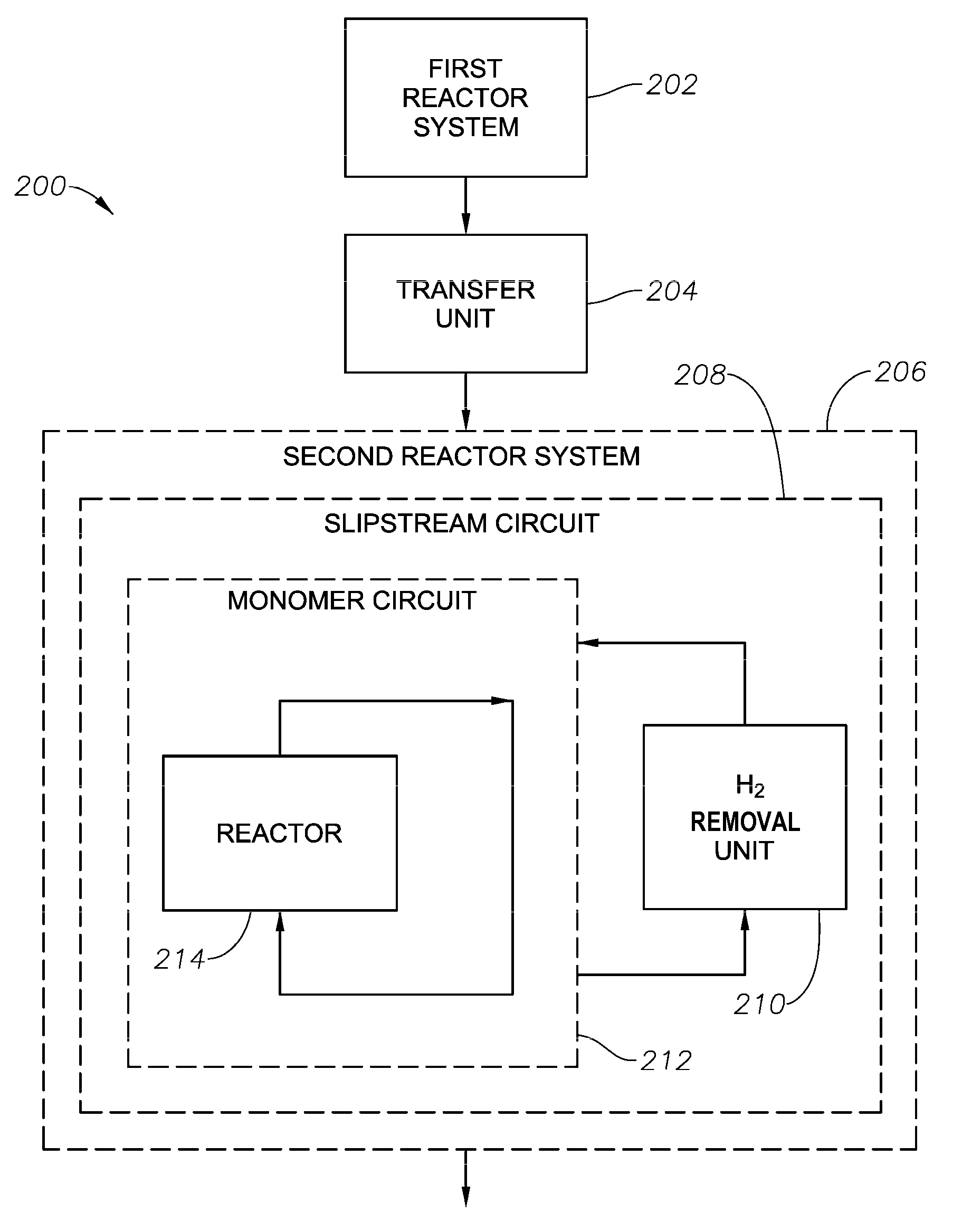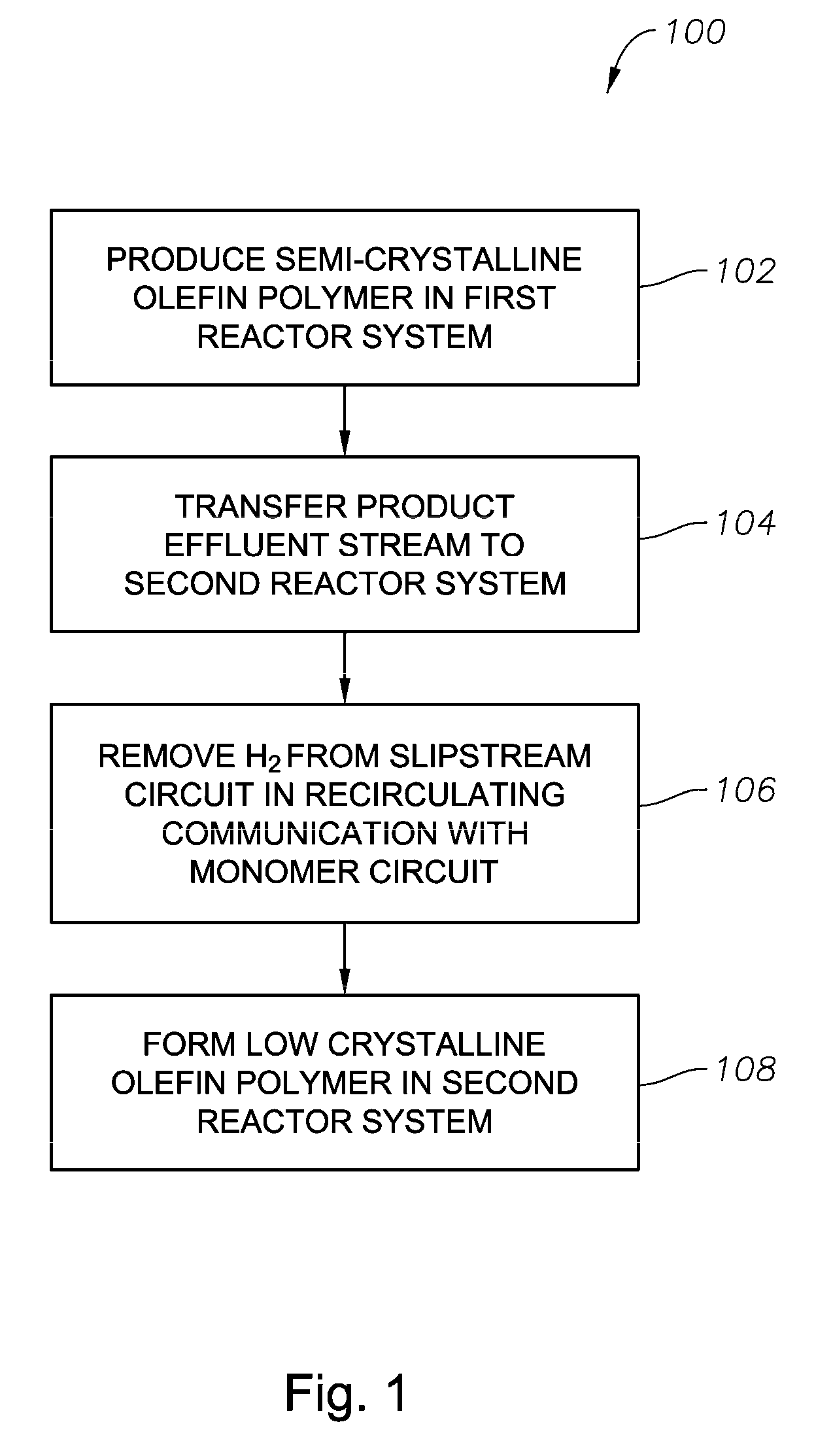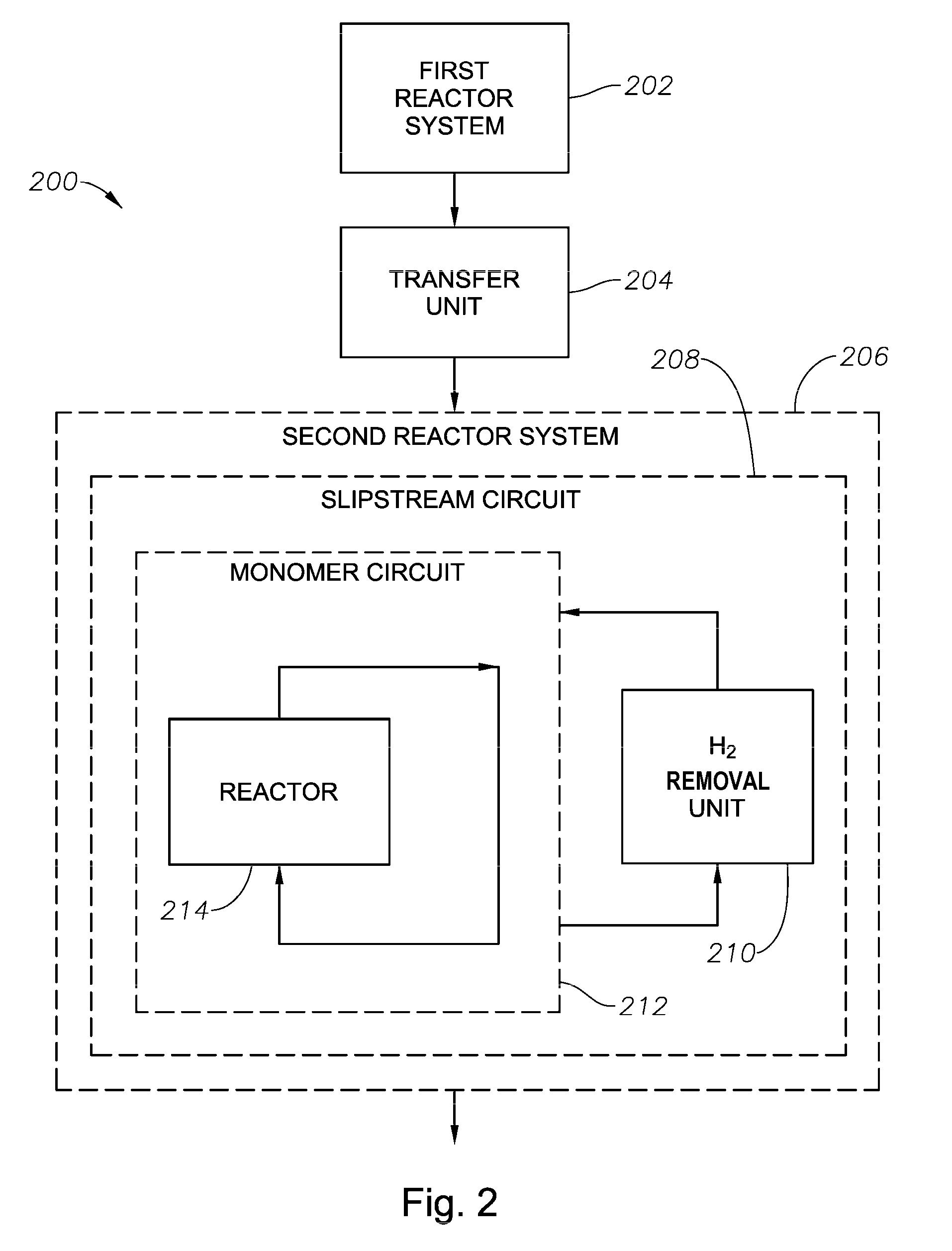Copolymer production system and process
a production system and copolymer technology, applied in chemical/physical/physical-chemical processes, chemical apparatus and processes, chemical/physical/physical-chemical stationary reactors, etc., can solve the problems of limited epr quality that can be formed in the gpr, and limited maximum molecular weight of epr
- Summary
- Abstract
- Description
- Claims
- Application Information
AI Technical Summary
Benefits of technology
Problems solved by technology
Method used
Image
Examples
Embodiment Construction
[0018]Various specific embodiments, versions and examples of the invention will now be described, including preferred embodiments and definitions that are adopted herein for purposes of understanding the claimed invention. However, for purposes of determining infringement, the scope of the “invention” will refer to the appended claims, including their equivalents, and elements or limitations that are equivalent to those that are recited. All references to the “invention” below are intended to distinguish claimed apparatuses and methods from apparatuses and methods not considered to be part of this invention. It is understood, therefore, that any reference to the “invention” may refer to one or more, but not necessarily all, of the inventions defined by the claims. References to specific “embodiments” are intended to correspond to claims covering those embodiments, but not necessarily to claims that cover more than those embodiments.
GENERAL DEFINITIONS
[0019]As used herein, the new nu...
PUM
| Property | Measurement | Unit |
|---|---|---|
| melting temperatures | aaaaa | aaaaa |
| temperature | aaaaa | aaaaa |
| glass transition temperature | aaaaa | aaaaa |
Abstract
Description
Claims
Application Information
 Login to View More
Login to View More - R&D
- Intellectual Property
- Life Sciences
- Materials
- Tech Scout
- Unparalleled Data Quality
- Higher Quality Content
- 60% Fewer Hallucinations
Browse by: Latest US Patents, China's latest patents, Technical Efficacy Thesaurus, Application Domain, Technology Topic, Popular Technical Reports.
© 2025 PatSnap. All rights reserved.Legal|Privacy policy|Modern Slavery Act Transparency Statement|Sitemap|About US| Contact US: help@patsnap.com



